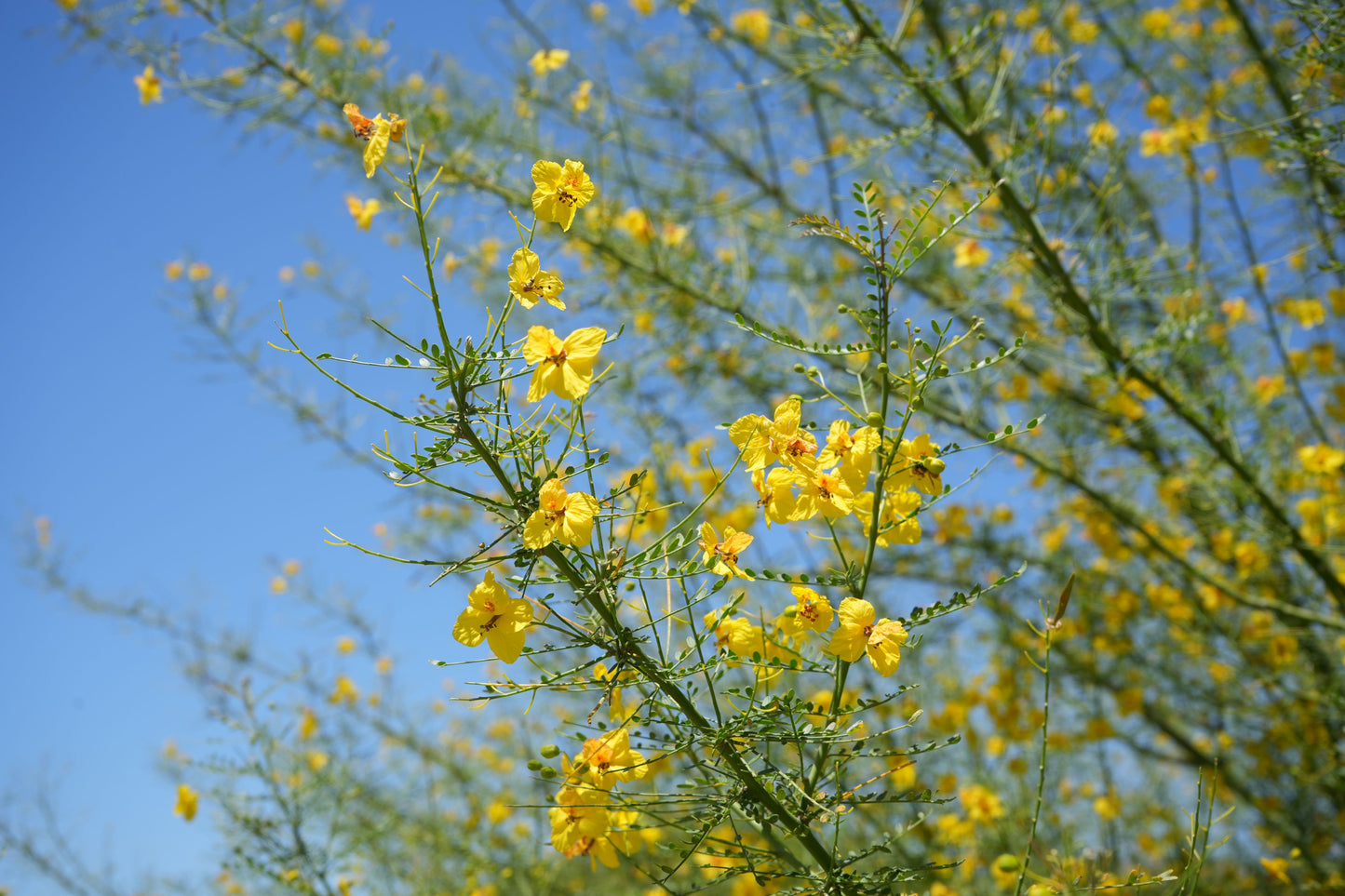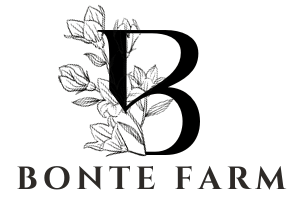Bonte Farm
Blue Palo Verde: Desert Gold Thornless Palo Verde – Fast-Growing, Drought-Proof Shade
Blue Palo Verde: Desert Gold Thornless Palo Verde – Fast-Growing, Drought-Proof Shade
Couldn't load pickup availability
The Blue Palo Verde (Parkinsonia aculeata) is a striking, iconic desert tree cherished for its fast growth, uniquely green bark, and spectacular spring display of bright yellow flowers.1 Unlike many other desert species, this popular variety is selectively bred to be thornless, making it an ideal, user-friendly shade and feature tree for residential and public landscapes. Its signature photosynthetic green bark allows it to maintain vigor even during drought, while its airy, graceful canopy provides filtered shade, creating a cool, dappled environment. As a highly drought-tolerant and low-maintenance choice, the thornless Palo Verde is essential for xeriscape, Southwest, and native-plant garden designs.2
Botanical Characteristics
|
Characteristic |
Detail |
|
Scientific Name |
Parkinsonia aculeata (This product features a thornless cultivar or hybrid). |
|
Common Names |
Blue Palo Verde, Jerusalem Thorn (Historically), Mexican Palo Verde. |
|
Growth Habit |
A fast-growing, deciduous to semi-evergreen tree with a multi-branched, picturesque, and somewhat weeping canopy. |
|
Foliage |
Features bright green, compound leaves that are bipinnate (double-divided) and typically shed during extended drought to conserve water, revealing the green bark. |
|
Flowers |
Profuse clusters of brilliant yellow, pea-like flowers cover the entire tree in spring, creating a breathtaking, golden spectacle. |
|
Bark |
The distinguishing feature is its smooth, vibrant green bark, which contains chlorophyll, allowing for year-round photosynthesis and drought resilience. |
|
Fruit |
Small, brown, elongated pods that follow the spring bloom. |
|
Thorns |
This particular offering is a selectively bred thornless variety, enhancing safety and landscape utility. |
Mature Size
The thornless Palo Verde is known for its relatively rapid growth rate, typically reaching a height of 20–30 feet (6–9 meters) with a slightly wider, airy spread of 25–35 feet (7.5–10.5 meters). Its open, weeping structure offers welcome filtered shade without the heaviness of typical deciduous trees.
USDA Hardiness Zone
This highly resilient tree is reliably hardy in USDA Hardiness Zones 8–11. It thrives in hot, arid climates and is capable of withstanding high summer temperatures and mild winter freezes once established.
Cultivation and Care
|
Aspect |
Care Instructions |
|
Sunlight |
Requires full, direct sun (at least 6-8 hours daily) to maintain vigorous growth and the signature vibrant green bark color. |
|
Soil |
Highly adaptable but demands excellent drainage. Tolerates poor, rocky, sandy, and alkaline desert soils. |
|
Water |
Extremely drought-tolerant once established. Requires deep, infrequent watering during its first year. Mature trees require only occasional deep irrigation during severe drought conditions. Avoid overwatering, especially in heavy soils. |
|
Fertilizer |
Generally requires no fertilizer in native desert soil. If growth is slow in poor soil, use a balanced, all-purpose slow-release fertilizer sparingly in early spring. |
|
Pruning |
Best practice is to prune in late winter or early spring to establish a strong central leader and lift the canopy for clearance. The light, open structure requires minimal maintenance pruning. |
Landscape Use
- Shade and Specimen Tree: Provides highly valued, dappled shade and serves as a spectacular focal point with its golden spring bloom and green bark.3
- Xeriscape Gardens: An indispensable tree for low-water, water-wise landscapes.
- Desert Native Gardens: Key component in recreating a natural, Southwestern desert aesthetic.
- Park and Street Tree: The thornless characteristic makes it an excellent choice for public spaces and pedestrian areas.
Wildlife Attraction
The abundant nectar-rich yellow blossoms are a magnet for pollinators, including bees and various species of butterflies. The tree also offers nesting sites and cover for desert-dwelling birds.4
Pest and Disease Resistance
The Palo Verde is an exceptionally hardy and resilient species, offering strong resistance to most common pests and diseases. The main issue is root rot, which is entirely avoidable by planting in well-drained soil and adhering to a low-water regimen.
Propagation
To ensure the desirable thornless characteristic is maintained, this variety is propagated via grafting or cuttings. While the species can be grown from seed, propagation from cuttings is the preferred method to guarantee the true-to-type, superior features of the parent plant. This ensures customers receive the reliable, user-friendly thornless form.
Share





FAQs
Got a question? We are here to answer





